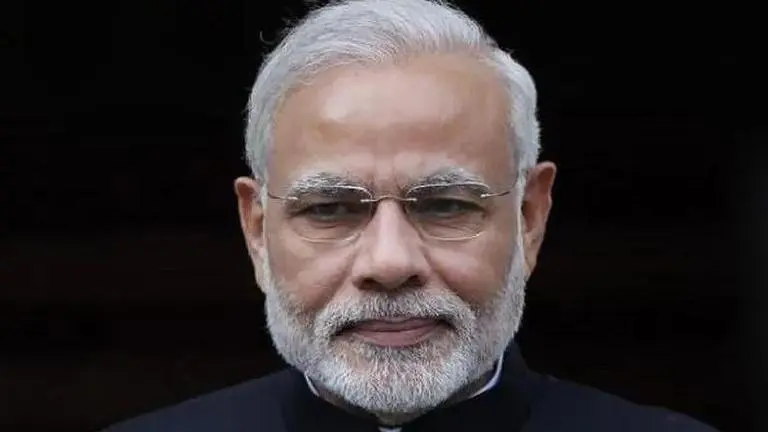Updated 25 May 2023 at 22:45 IST
How 9 years of PM Modi took India from developing nation to democracy worthy of emulation
The Bharatiya Janata Party's campaign in 2014 was Achche Din Aane Wale Hain. Nine years later, India is the fifth largest economy in the world.
- India News
- 4 min read

The end of May will mark nine years of the Modi government in power. Narendra Modi, the former chief minister of Gujarat, was elected Prime Minister following a thunderous victory in the 2014 general elections as India decided to send the Congress packing after 10 years of scam and scandal. The Bharatiya Janata Party's campaign in 2014 was Achche Din Aane Wale Hain (Good days are coming). Nine years later, India is the fifth largest economy in the world, almost every home in the country has a toilet and villages have been electrified. The global profile of India has undergone a transformation where the country which would be described as developing nation struggling consistently to a potential economic powerhouse.
With just one year to go before the Lok Sabha polls, here's taking stock of how India has transformed in the last nine years.
The 5th largest economy in the world
A postcolonial nation ripped off of its generational wealth, India battled immense poverty and economic malaise for the first few decades after Independence. But this was India's hour to shine. In 2022, India overtook the UK to become the fifth largest economy in the world. India will continue to be the fifth largest economy in the world this year too, the Reserve Bank of India has said. The IMF forecasts that India will become the fourth place by 2025 and to the third place by 2027.
(Source: International Monetary Fund)
Advertisement
The end of Kashmir's special status
In a move that echoed across the world, India decided to end Kashmir's special status in one of the most significant geopolitical moves after the Pokhran nuclear tests. On August 5, 2019, Union Home Minister Amit Shah moved Parliament to end Kashmir's special status granted under Article 370. This meant, Kashmir, the beautiful Valley bloodied by terrorism, would have to adopt every law passed in India and the Indian Constitution would apply to Jammu and Kashmir in the same way it applies to the rest of India. Four years later, terrorism is on the wane in Kashmir and the region recently hosted the G20 Summit.
Delegates at the 3️⃣rd #TWG Meeting started their day with a calming yoga session & explored the rich culture of J&K through elaborate excursions to the famous Nishat Bagh, Polo View Market & Pari Mahal.
— G20 India (@g20org) May 24, 2023
Check out the glimpses from the day! #G20India pic.twitter.com/2kngtKhymQ
A pandemic and an indigenous vaccine
COVID-19, a once-in-a-century pandemic that killed nearly 7 million people, hit India hard. Facing up to the challenge, India's health infrastructure struggled, but sustained extremely difficult circumstances. But India's moment was when the country decided to come up with its own vaccine instead of importing it from other nations, even as Opposition leaders targeted the government. India then went on to conduct one of the world's biggest vaccine drives ever. As of today, over 100 crore Indians have received at least one dose of the COVID-19 vaccine.
Advertisement
Force of stability in rough weather
The world order has seen a particularly rough few years. The US withdrawal of troops from Afghanistan, the war in Ukraine and the crisis in Sudan have veritably unsettled geopolitics. The Indian government ensured that Indian citizens living in these countries get a safe ride home, braving extremely different circumstances. The Centre ran the Devi Shakti operation to bring back more than 700 Indians back to their homeland and when war broke out in Ukraine India rescued 23,000 students from Ukraine. Similiarly, the Union government brought back a number of people from crisis-ridden Sudan.
#WATCH | Prime Minister Narendra Modi interacted with members of the Hakki Pikki tribe, who were evacuated from Sudan under #OperationKaveri, in Shivamogga earlier today#Karnataka pic.twitter.com/SW8EOuLFTT
— ANI (@ANI) May 7, 2023
Keeping farmers afloat
For years, farmers suicides would make regular headlines. Burdened under the weight of debt, many farmers over years chose to give up their lives. In a bid to help these people, the Centre brought in a welfare policy to give Rs 6,000 every year to keep them afloat under the Pradhan Mantri Kisan Samman Nidhi scheme. The scheme has had significant impact in ensuring that farmers don't fall into desperate circumstances.
(Image: Unsplash)
Demonetisation and digital India
On November 8, 2016, India decided to ban 85% of its currency in market to deal a deathblow to corruption. While the success of the move will only become apparent in years, the sudden move prompted India to immediately switch to digital money backed by UPI. India leads the world in real-time digital payments by clocking almost 40% of all such transactions. The shift to a digital economy has transformed how business is done at the hyper-local level.
(Image: Unsplash)
Published By : Amrit Burman
Published On: 25 May 2023 at 15:18 IST




